What is Ragtime: The music of Scott Joplin (sheet music)
Solace – Scott Joplin (sheet music)
Maple leaf Rag – Scott Joplin sheet music
Scott Joplin
(Texarcana, 1868 – New York, 1917) American pianist and composer. to formal perfection ragtime , pieces with a syncopated rhythm that were very popular in the first decades of the 20th century in the United States, in which a sense of rhythm close to that of jazz can be appreciated. His Maple leaf rag (1899) for piano met with immense success. The opera Treemonisha (1911), a mixture of black rhythms, ragtime and Italian opera, is his most ambitious work.

Scott Joplin
Scott Joplin received private piano lessons from a very young age. In the mid-1980s he undertook a long journey through the American Midwest, and in 1893 he performed at the Columbian Exposition in Chicago.
Joplin wanted to succeed as a pianist and as a classical composer; for this reason he settled in 1895 in Sedalia and studied music at the George R. Smith University for colored people. In 1900, he moved to St. Louis to work with music publisher John Stark.
In 1902, he published and choreographed his first ballet piece, in which numerous ragtime, and in 1903 he published his first opera, guest of A honor.

Then, in 1907, he moved to New York, and in the same year he wrote the instruction manual The School of Ragtime. Joplin developed and perfected ragtime with a series of compositions that have become classics of this genre, such as Maple leaf rag, Wall street rag and The entertainer , a theme on which composer Marvin Hamlisch would base himself for the unforgettable soundtrack of the film The Heist (1973), starring Paul Newman and Robert Redford. His contract with John Stark ended in 1909.
One of his most outstanding productions was Treemonisha , from 1911, a work that synthesizes all the ideas that the author had about music in a classical opera. Of this opera between acts, for which Joplin also wrote the libretto, only the edition for voice and piano survives, edited at the time by the same author, although the manuscript score for orchestra, which Scott Joplin finished, has not been found. but that was unpublished.
Treemonisha has been defined as “the first great American opera, since it speaks a genuinely American language with the conventional forms of Western opera, such as the overture, the aria, the graceful, the recitative, the choirs and the ballet” (WJ Schafer and J. Riedel). The work is of closed forms and is made up of twenty-seven numbers. Some precise choreographic indications, drawn up by Joplin, accompany some scenes; they are of particular interest for mounting numbers 4, 13 and 27.
The action takes place in 1884, when Treemonisha, the protagonist, is eighteen years old. The scene takes place on a plantation in Arkansas and in the thick jungle that surrounds it. The area is inhabited only by blacks, since their white masters have abandoned it after the defeat of the Confederates. Two tendencies confront the population: a fetishist, dominated by superstitions and linked to magical culture, ridiculed by Joplin, and another that trusts in the progress achieved through culture, personified by Treemonisha and her parents.
Treemonisha (whose name derives from the fusion of the words “tree”, tree, and Monisha, the name of the woman who wanted to have a child, found the girl under a tree, and raised her as her own) is the only literate person from the black community, for whom the civil war has brought freedom.

Educated by a white woman in exchange for her parents’ work, Treemonisha, once her training is over, finds, thanks to her education and culture, the necessary strength to overcome the superstitious and magical tendency present in the community.
Obviously, she goes through difficulties and dangers, which initiate her in the role of a guide capable of enlightening the black community. The plot core of the libretto is found in this contrast and in these difficulties, which give a special originality to the extraordinary balance that exists between the non-realistic character of the operatic form and the concrete character of its non-fantastic communication.
The choice of a woman who assumes the role of the protagonist possibly derives from the prevailing matriarchal character (more for socio-historical reasons than for residual Africanism) among the black populations of North America.
Joplin only occasionally uses in this work the rhythmic pattern of ragtime, which she seems to have used more extensively in an earlier opera, A Guest of Honor in 1903, now lost.
After Treemonisha , Scott Joplin composed and even recorded on piano rolls several ragtime pieces, so this opera certainly represents neither a criticism nor an abandonment of the music that was in fashion at the time, and that gave him a well-deserved fame.
Treemonisha is not an ambitious extension of the forms of that genre, but rather identifies itself completely with the operatic tradition, and sinks its roots and its reason for being in that life of the melodramas of the South of the United States that left so many traces in the music by some old jazz composers, and also by Louis Armstrong.

The Musical Elements Of Ragtime In The Music Of Scott Joplin
Introduction
With its origins dating back to the 19th century, the ragtime music genre is widely considered to be the forerunner of what jazz music would become today. This genre is easily recognized by its cheerful and bouncy style. Although today when the term “Ragtime” is mentioned, it usually refers to music exclusively for piano, in the golden years of this genre voice and other musical instruments were also included mainly, as well as its own dance style.
Defined by the Oxford dictionary in Spanish (sf), ragtime is the “style of black dance music born at the end of the 19th century and very popular at the beginning of the 20th, with a syncopated binary rhythm, and composed mainly for piano.”
To analyze the musical and artistic elements of this genre in particular, two pieces considered fundamental to the genre will be analyzed and compared, created by the author Scott Joplin, “[…] who composed works of considerable charm and ingenuity […]”.
The research question derives from the topic “The musical elements of Ragtime”, which is “What are the rhythmic and harmonic aspects of the pieces Maple Leaf Rag (1899) and The Entertainer (1902) by Scott Joplin for the development of the genre Ragtime?”.
The focus of this monograph will focus on the musical technical and theoretical analysis of the rhythmic and harmonic aspects of the previously mentioned pieces. The possible contextual elements that could have influenced the creation of these pieces will also be discussed, as well as their importance at the time they were published.
The justification for investigating this topic is of mere personal interest, since for a portion of my life I had listened to these rhythms on recordings without knowing which genre they particularly belonged to. It was until I was introduced to Ragtime as such in private piano lessons. Although at first it was complex for my ability to learn to play a style with ripped time, it soon became one of my favorite genres to play.
It is considered pertinent to carry out a study of the elements that characterize the previously mentioned genre, to analyze how a particular feeling and energy can be transmitted through the adequate use of musical theory, and how it can help in the expression of specific feelings in the form of music. of music.
The analysis of both musical pieces will be divided into two sections. The piece The Entertainer will be analyzed first, then Maple Leaf Rag, and once the most emblematic aspects of each piece have been extracted, these elements will be contrasted, in such a way that it is possible to observe which ones stand out the most so that a piece is considered of the genre.
These foundations will also be enriched with the social and historical context and what factors influenced the creation of said harmonies and rhythms, also including expert comments on the interpretation of said pieces, such as speed, accents, among others.
The scope of this monograph is limited to the availability of scores and the lack of recordings performed by the author himself, due to the archaic technology of the 19th century, in which musical production was just beginning to industrialize. Primary sources are Maple Leaf Rag and The Entertainer sheet music. Secondary sources are internet articles written by professionals.
The Entertainer
The structure of this piece constitutes an introduction to enter the work, and then a pattern is presented in the following sections: AA BB A CC DD. Each section fulfills the function of being repeated once, with the exception of section A, in such a way that in the second repetition a variation of the section is played that connects with the following one. So until you reach the last section D to finish the Rag.
Graphic of my authorship. Demonstration of the various sections in The Entertainer (Joplin, 1902).
Graphic of my authorship. Demonstration of the various sections in The Entertainer (Joplin, 1902).
Introduction: This prepares our ear to enter the piece. It is a small motif that is repeated twice, each time played an octave below the previous one, then a small chromatic variation descends in such a way as to leave room for an accented G major chord. An upbeat marks another chromaticism from D to D# for the anticipation of the next measure.
Section A: This section tells us the main theme of the piece. It has a simple pattern. The first motif, which spans bars 5-16, is repeated three times, followed by a second motif from bars 17-20, which functions as a turnaround would in blues music, to return to the first motif. This set of reasons are those that elaborate the main theme.
You can see that the structure of this piece is AA BB A CC DD. Each section ends after a repetition, in which, the second time it is played again, it concludes with a second box. This to vary what was proposed in each section during the first round, and apart from serving as a ‘transition’ for the next section.
This happens for most of the piece, except for one more repetition of section A, after section B, which has the function of accentuating the main theme of the song. Graphic by me. Demonstration of the various sections of the Maple Leaf Rag (Joplin 1899).
Section A: Theme of the piece. It is the most recognizable when listening to the song. Its purpose is to set a main mood for the listener. Maple Leaf Rag in this section has a fast melody, played at twice the speed of the left hand, playing one hand in sixteenth notes and the other in eighth notes.
Section B: Continued with fast melodies in sixteenth notes, the bass begins to progress with a syncopated rhythm. This section also bears resemblance to the typical bass of a military march.
Section C: As in section B, it continues with a syncopated bass, however, it also begins to walk more, as well as the typical bass of Jazz. The melody progresses in more complex variations than the previous section, since it does not stay within the range of an octave that it make arpeggios. This section is the most complex of the piece.
Section D: Similar to section A, the syncopated bass is no longer as marked as other sections and a motif begins to be created to conclude the piece, resolving various tension chords to give the feeling of returning home. On the second repeat, it ends with a grand chord on the tonic of the E flat major scale.
Rhythm and harmony
The compass that is carried is 2/4. This indicates that the numerator will divide the measure into two parts, and the denominator that it will be counted in quarter notes, of which 4 fill a full beat. So, they fit 2 quarter notes per bar in 2/4 time.
This time signature also indicates on which pulse the accents would be marked. In western music it is usually accentuated on the first beat of each measure, however, in syncopated rhythm, the beats corresponding to 2 and 4 are accented. In ragtime, as well as in various subgenres of Jazz, this characteristic is used, managing to create a distinctive rhythm. Bar 18 of Maple Leaf Rag.
The left hand is responsible for carrying and marking these accents, big jumps are made with the hand on the piano keyboard. Thanks to this, it was considered an innovation for his time, since Joplin invents playing bass and harmony with the same hand consecutively.
Harmony: (talk about chords, resolution of 7ths and change between 5ths. E flat major). As for the harmony of this piece, it is written in the key of E flat major.
Melody
Scales: (pentatonic, natural)
Melody patterns: (arpeggios within a single octave)
‘Although not the first rag to be written or published, Maple Leaf Rag became the first instrumental piece to sell more than a million copies.’ (Edwards, s.f.). One of Joplin’s early compositions was a resounding success, as he reached this number in less than a decade. With this, Joplin is recognized as ‘the king of Ragtime’, making it, in a short time, the musical genre par excellence in the United States.
Browse in the Library:
| Artist or Composer / Score name | Cover | List of Contents |
|---|---|---|
| The jazz style of John Coltrane – David N. Baker |
 |
|
| The Jazz Tradition by Martin Williams (1993) |
 |
|
| The Joe Pass Collection with Tablature |
 |
The Joe Pass Collection |
| The John Coltrane companion by Carl Woideck |
 |
|
| The John Dunbar Theme – John Barry (Musescore File).mscz | ||
| The Joy Of Baroque Music |
 |
|
| The Joy Of Boogie And Blues |
 |
The Joy Of Boogie And Blues |
| The Joy Of Boogie And Blues Book 2 |
 |
Boogie And Blues. Book 2 The Joy Of |
| The Joy Of Christmas – The Best loved Carols, Hymns, songs and solos |
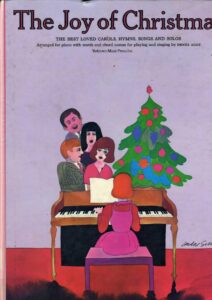 |
The Joy Of Christmas – The Best loved Carols, Hymns, songs and solos |
| The Joy Of Classics Collection Of Easy Classical Piano Pieces |
 |
The Joy Of Classics Collection Of Easy Classical Piano Pieces |
| The Joy Of Disney – Easy Piano Songbook |
 |
The Joy Of Disney – Easy Piano Songbook |
| The Joy Of First Classics – Easy pieces – Easy Piano Songbook |
 |
The Joy Of First Classics – Easy pieces – Easy Piano Songbook |
| The Joy Of First Year Piano Music |
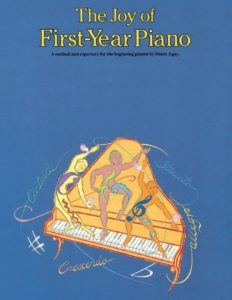 |
|
| The Joy of First-Year Piano by Denes Agay (Easy piano, piano facile) |
 |
The Joy of First-Year Piano by Denes Agay (Easy piano, piano facile) |
| The Joy Of French Piano Music |
 |
The Joy Of French Piano Music |
| The joy of George Gershwin |
 |
The joy of George Gershwin |
| The Joy Of Italian Melodies – Easy Piano Songbook |
 |
The Joy Of Italian Melodies – Easy Piano Songbook |
| The Joy Of Jazz (Easy to Medium Grade Piano Solos) |
 |
The joy of Jazz |
| The Joy Of Modern Blues |
 |
The Joy Of Modern Blues |
| The Joy Of Modern Piano Music (20th century classical music) |
 |
The Joy Of Modern Piano Music (20th century classical music) |
| The Joy Of More Classical Music |
 |
The Joy Of More Classical Music |
| The Joy of Music – Bernstein, Leonard 1918-1990 (Book) |
 |
|
| The Joy Of Piano Duets |
 |
The Joy Of Piano Duets |
| The Joy Of Piano Entertainment Piano Solo selected by Denes Agay |
 |
The Joy Of Piano Entertainment Piano Solo selected by Denes Agay |
| The Joy Of Pop Tunes – Easy Piano Songbook |
 |
The Joy Of Pop Tunes – Easy Piano Songbook |
| The Joy Of Recital Time Piano Solo selected by Denes Agay |
 |
The Joy Of Recital Time Piano Solo selected by Denes Agay |
| The Joy Of Russian Piano Music |
 |
|
| The Joy Of Sonatinas – Easy Piano Songbook |
 |
The Joy Of Sonatinas – Easy Piano Songbook |
| The Jungle Book Soundtrack Disney |
 |
The Jungle Book Soundtrack |
| The Keyboard Music Of Bach J.S. by David Schulenberg (eBook) |
 |
|
| The Killers – All These Things That I’ve Done Sheet Music |
 |
|
| The Killers – Mr Brightside Sheet Music |
 |
|
| The Killers – Shot At The Night Sheet Music |
 |
|
| The Killers – Somebody Told Me Sheet Music |
 |
|
| The Killers – When You Were Young Sheet Music |
 |
|
| The Killers – Human (sheet music with guitar chords) |
 |
|
| The Killers Day & Age |
 |
The Killers Day & Age |
| The King And I – A Musical Play Piano Vocal Score by Rodgers and Hammerstein II | The King And I – A Musical Play Piano Vocal Score by Rodgers and Hammerstein II | |
| The Kinks Guitar Legends Songbook With Tablature TABs |
 |
The Kinks Guitar Legends Songbook With Tablature TABs |
| The Lang Lang Piano Method Level 1 (Lang Lang) |
 |
|
| The Lang Lang Piano Method Level 2 (Lang Lang) |
 |
|
| The Lang Lang Piano Method Level 3 (Lang Lang) |
 |
|
| The Lang Lang Piano Method Level 4 (Lang Lang) |
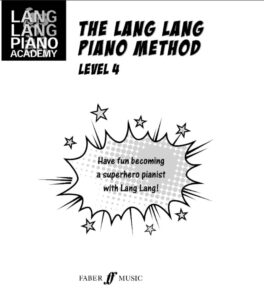 |
|
| The Lang Lang Piano Method Level 5 (Lang Lang) |
 |
|
| The Lark Ascending (Musescore File).mscz | ||
| The Last 5 Years Songbook Movie Vocal Selections (Jason Robert Brown) Piano Vocal Guitar |
 |
The Last 5 Years Songbook Movie Vocal Selections (Jason Robert Brown) Piano Vocal Guitar |
| The Last Of The Mohicans (Main Theme) by Trevor Jones | The Last Of The Mohicans (Main Theme) by Trevor Jones | |
| The Last Of Us Piano Medley (Musescore File).mscz | ||
| The Last of Us – Main Theme Guitar arr. sheet music with TABs |
 |
|
| The Last of Us -All Gone (Aftermath) Gustavo Santaolalla (Easy Piano Solo arr.) |
 |
|
| The Last Of Us -All Gone (Aftermath) Gustavo Santaolalla (Easy Piano Solo Arr.) (Musescore File).mscz | ||
| The Last Of Us Main Theme Guitar (Musescore File).mscz | ||
| The Last Of Us Theme by Gustavo Santolalla (Piano Game Sheet Music) | The Last Of Us Theme by Gustavo Santolalla (Piano Game Sheet Music) | |
| The Last Run (Jerry Goldsmith) | ||
| The Legend of Zelda Overworld music Konchan | ||
| The Legend of Zelda – Great Fairy Fountain |
 |
|
| The Legend Of Zelda Main Theme Kondo Koji (Musescore File).mscz | ||
| The Legend Of Zelda Series For Easy Piano |
 |
|
| The Legend of Zelda Twilight Princess – Midnas Theme | ||
| The Lennon Companion – Book (2004) by E. Thomson & D. Gutman – John Lennon’s Biography |
 |
|
| The Library Of Easy Piano Classics Vol. 1 |
 |
The Library Of Easy Piano Classics, Vol.1 |
| The Library Of Easy Piano Classics Vol. 2 |
 |
The Library Of Easy Piano Classics Vol 2
 |
| The Life And Music Of Charlie Parker bird by Chuck Haddix (Book) Biography |
 |
|
| The Light Between Oceans Isabel Alexandre Desplat – Isabel Sheet Music |
 |
|
| The Light In The Piazza 2005 Tony Award Winner by Adam Guettel Piano Vocal |
 |
The Light In The Piazza 2005 Tony Award Winner by Adam Guettel Piano Vocal |
| The Lion King – Broadway selections – Elton John |
 |
The Lion King – Broadway selections – Elton John |
| The Lion King – Can You Feel The Love Tonight – Elton John | Elton John – Can You Feel The Love Tonight | |
| The Lion King – Circle Of Life – Elton John | Elton John Circle of life- | |
| The Lion King – Piano Elton John |
 |
|
| The Lion King (The Musical)- Piano Vocal (Full Conductor’s Score) | The Lion King (The Musical)- Piano Vocal (Conductor’s Score) | |
| The Lion King Disney’s – Original songs |
 |
The Lion King Disney’s – Original songs |
| The Lion King The Musical Full Score Hans Zimmer, Elton John, Tim Rice |
 |
|
| The Little Mermaid She’s In Love (Disney) |
 |
|
| The Little Mermaid Broadway Score |
 |
|
| The Little Mermaid Disney’s Sheet Music Book |
 |
The Little Mermaid Disney’s Sheet Music Book |
| The Living Sculptures of Pemberley from Pride and Prejudice | The_Living_Sculptures_of_Pemberley_from_Pride_and_Prejudice | |
| The Longest Night (Mother’s Boys OST) Clair Marlo | ||
| The Look Of Love – Burt Bacharach (Musescore File).mscz | ||
| The Lord of the Rings The Return of the King Minas Tirith | Lord of the Rings – The Return of the King.PDF | |
| The Lord Of The Rings The Return Of The King Howard Shore Viggo Mortensen |
 |
|
| The Lord of the Rings (Howard Shore) Symphonic Suite |
 |
|
| The Lord Of The Rings Complete Score Howard Shore |
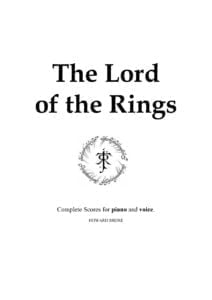 |
The Lord Of The Rings Complete Score Howard Shore |
| The Lord of the Rings sheet music Piano & Vocal |
 |
 |
| The Lumineers Songbook (The Lumineers) with Guitar TABs by Jeremy Fraire and Wesley Schultz |
 |
The Lumineers Songbook (The Lumineers) with Guitar TABs by Jeremy Fraire and Wesley Schultz |
| The Making Of Kind Of Blue Miles Davis And His Masterpiece (Book) |
 |
|
| The Mandalorian Music From The Disney Original Series (Star Wars) Piano Solo |
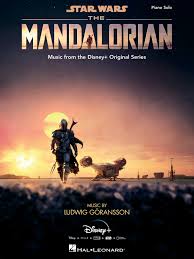 |
The Mandalorian Music From The Disney Original Series (Star Wars) Piano Solo |
| The Manhattan Transfer Bodies And Souls |
 |
 |
| The Manhattan Transfer Songbook |
 |
 |
| The many Crimes of Cain (To Kill a Priest OST) Georges Delerue & Joan Baez |
 |
|
| The Moody Blues – Nights in White Satin | The Moody Blues – Nights in White Satin | |
| The Moody Blues – Nights in White Satin (Easy Piano Solo sheet music) |
 |
|
| The most requested LDS songs from the inspirational Music Showcase |
 |
80 Most Requested LDS Songs (Mormon music) |
| The Mostly Mozart Guide To Mozart by Carl Vigeland (eBook) |
 |
|
| The Mummy (Jerry Goldsmith) | ||
| The Museum – Paper Mario The Origami King (Musescore File).mscz | ||
| The Music Effect Music Physiology And Clinical Applications (Book) |
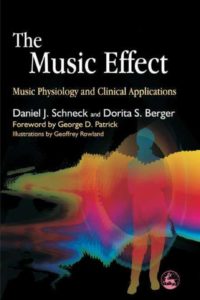 |
|
| The Music Lesson A Spiritual Search For Growth Through Music Victor L. Wooten (Book) |
 |
|
| The Music Of Bela Bartok A Study Of Tonality And Progression In Twentieth Century Music (Elliott Antokoletz) Book |
 |
|
| The Music Of Francisco Tarrega (Guitar) |
 |
The Music Of Francisco Tarrega (Guitar) |
| The Music Of Joni Mitchell (Book) by Lloyd Whitesell |
 |
The Music Of Joni Mitchell |
| The Musician, A Guide For Pianoforte Students Grade 6 (By Thomas Ridley Prentice) (1886) |
 |
|
| The New Illustrated Treasury Of Disney Songs |
 |
The New Illustrated Treasury Of Disney Songs |
| The New Real Book Vol 1 – Jazz Classics |
 |
The New Real Book Vol 1 – Jazz Classics, Choice Standard, Pop Fusion Classics CONTENTS |
| The New Real Book Vol 2 |
 |
The New Real Book 2 contents |
| The New Real Book Vol 3 – Jazz Classics – The Blue note era & swing era |
 |
The New Real Book 3 contents |
| The Nightmare Before Christmas – Jack And Sally Montage – Danny Elfman | ||
| The Nightmare Before Christmas – Jacks Lament |
 |
|
| The Nightmare Before Christmas – Sallys Song |
 |
|
| The Nightmare Before Christmas – This Is Halloween (Musescore File).mscz | ||
| The Offspring with MP3 audio tracks Guitar Play-Along Vol 32 with TAB |
 |
 |
| The Offspring Ixnay On The Hombre |
 |
The Offspring Ixnay On The Hombre |
| The Offspring Smash |
 |
The Offspring Smash |
| The Omen – The Piper Dreams – Goldsmith (Musescore File).mscz | ||
| The Omen – The Piper Dreams – Jerry Goldsmith Sheet Music Pdf |
 |
|
| The Organ Music Of Bach J.S. by Peter Williams (eBook) |
 |
|
| The Origins Of Music (Book) BY Nils L. Wallin, Bjorn Merker, Steven Brown |
 |
|
| The Passion of Our Lord Eugene Butler (for SATB Choir & organ or piano) |
 |
The Passion of Our Lord Eugene Butler (Choir SATB) |
| The Peanuts Christmas Carol Collection Big Note Very Easy Piano |
 |
The Peanuts Christmas Carol Collection Big Note Very Easy Piano |
| The Phantom Of The Opera – All I Ask Of You | ||
| The Phantom of the Opera – Andrew Lloyd Webber (Piano, Vocal, Guitar) |
 |
 |
